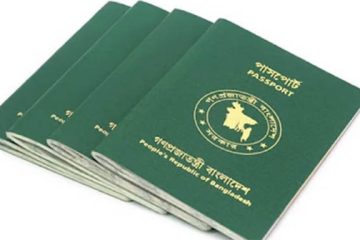In its monthly outlook released on Sunday, the Met Office warned that three of the lows are likely to form in the month of October over the Bay of Bengal may intensify into a cyclonic storm.
October is an active month for cyclones and five of the 33 historical cyclones since 1960 hit Bangladesh in this month, according to the record of Bangladesh Meteorological Department.
The monsoon is likely to withdraw by the last week of this month with its rainfall likely to remain above normal average, the monthly outlook said.
‘Weather analysis has become more challenging with unpredictable weather events markedly increasing,’ said senior meteorologist Abdul Mannan.
Historical record and warm eastern Bay of Bengal indicates that a cyclonic storm may create sometime in October, he explained.
The monthly outlook also summed up weather events in September, the month that saw five lows form over the Bay of Bengal, a highly unusual weather phenomenon against two being the average normal number.
It has become a new normal for the Bay of Bengal to see frequent lows form with many of them intensifying into depressions apparently because of high sea surface temperature, said Biswajit Nath, who teaches geography and environment at the University of Chittagong.
For over a month, the sea surface temperature in parts of the Bay of Bengal has remained as high as 29 degree Celsius or even higher against the average normal temperature of 27 degree Celsius, he said.
India Meteorological Department reported that month to month variation in rainfall put this monsoon in a unique place in historical record.
Meteorologically the monsoon season lasts from June to September in India. In Bangladesh, the monsoon season spreads from June to August.
The monsoon rainfall data of IMD showed 2 per cent above average normal rainfall in north-eastern India in June, followed by a 29 per cent below normal average rainfall in July, 2 per cent above average normal rainfall in August and 25 per cent below normal average rainfall in September.
Rainfall in north-eastern India greatly impacts Bangladesh’s rivers and causes flooding.
The IMD also predicted above-normal rain over sub-Himalayan, Gangetic West Bengal and Bihar in post monsoon months.
The IMD also recorded five lows in September against a long time average of three lows. Bangladesh recorded its highest rainfall of 101mm in the 24 hours until 9:00am on Sunday at Tetulia.
The highest daily maximum temperature of 35.4 degree Celsius in the country over the same time was recorded in Chandpur, according to the Met Office.




















